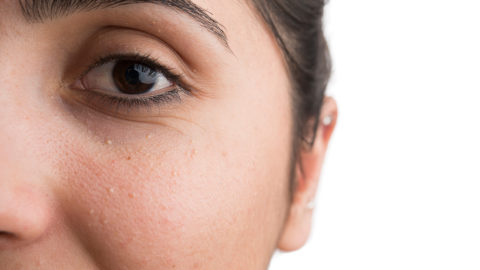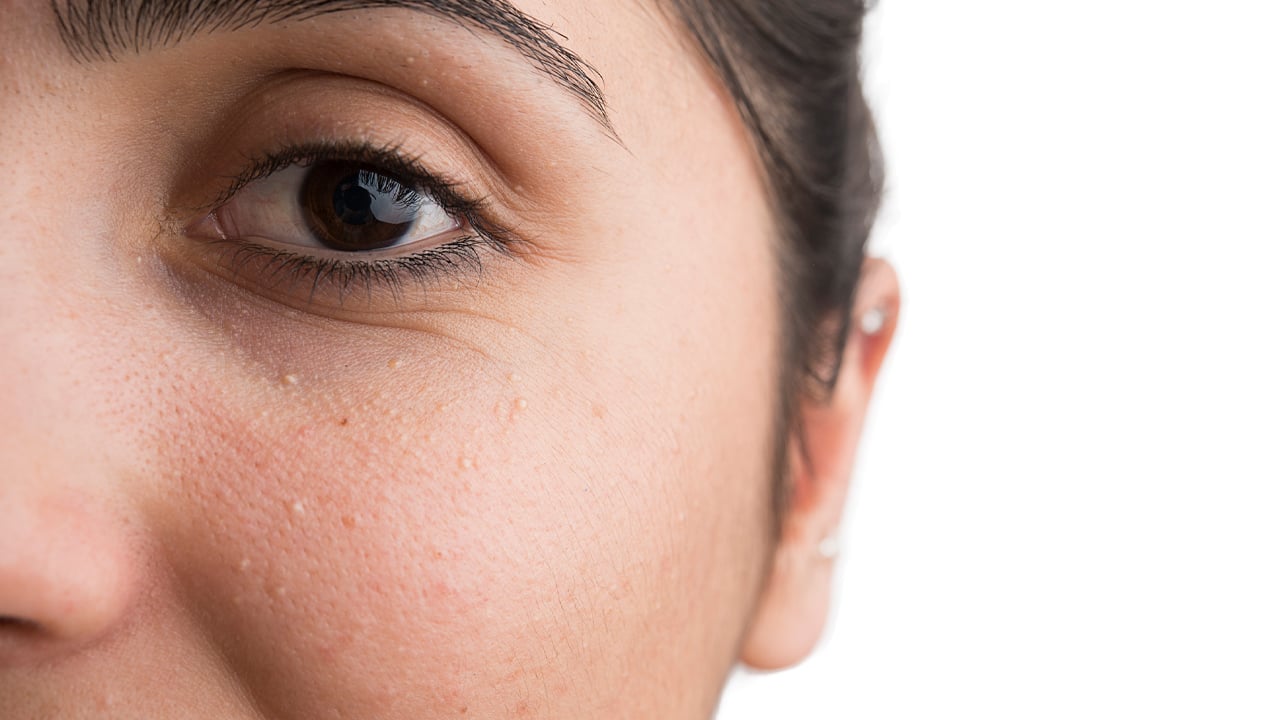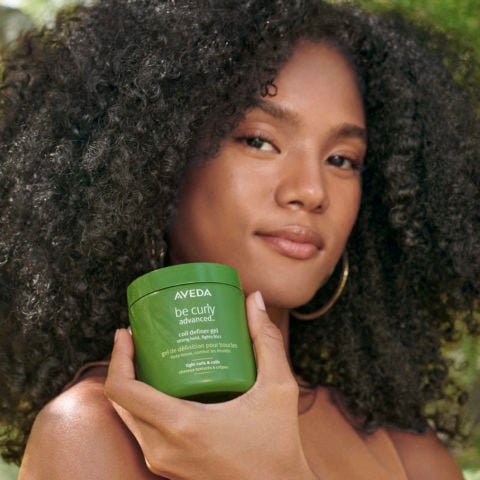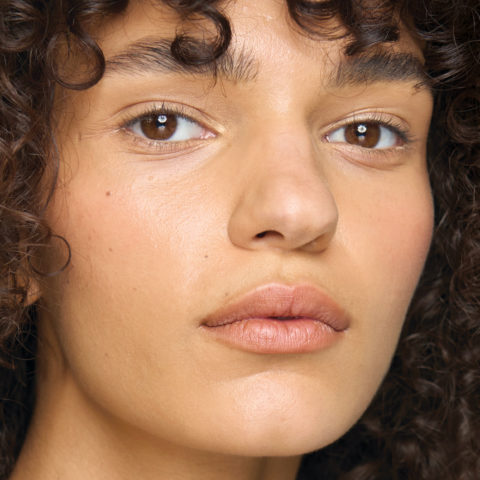Everything You Need to Know About Milia
Including how to treat those annoying little white bumps

Let’s play a game. What looks like a whitehead, feels like a whitehead, must be a whitehead—but doesn’t go away, can’t be popped or squeezed out and is therefore much more frustrating than a whitehead? If you guessed milia, you’ve hit the nail on the (not white)head.
We spoke to a dermatologist to learn everything there is to know about milia, those tiny white bumps that appear out of nowhere and set up camp on our faces, including (most importantly) how to get rid of them.
So, what exactly are milia?
A milium cyst, called milia if there are multiple (heads up: there usually are—they often appear in groups) is a tiny, painless white bump that appears on the face. Less frequently, they can appear on other parts of your body, like your torso. Milia are “quite common and can appear in people of all ages, regardless of skin type,” explains Dr. Harold Lancer, a Beverly Hills-based celebrity dermatologist who has worked with a long list of A-listers, like Kim Kardashian West, Ellen DeGeneresm Margot Robbie and Jennifer Lopez. “They frequently show up around the eyes, nose, cheeks and forehead.”
What causes milia?
When keratin, a protein that is found in skin cells (as well as hair and nail cells), gets trapped beneath the surface of the skin, it results in the appearance of milia. This can be due to anything from improper use of exfoliating treatments (which can “lead to keratin getting stuck beneath the skin’s surface, causing the appearance of milia,” explains Dr. Lancer) to clogged pores to aging. (As we age the skin loses its natural ability to exfoliate itself.) This is especially true around the eye area, where milia are most commonly seen. The eye area doesn’t contain oil glands and can often be quite dry, so products may not be absorbed correctly, leading to buildup and clogged pores.
So can skincare products cause milia?
Yes! “Often, milia appear when pores get clogged from certain topical creams or medications, so ‘oil-free’ products and thinner, less heavy moisturizers and eye creams are generally recommended to individuals who tend to have them,” explains Dr. Lancer.
Are certain skin types more prone to milia?
“People with highly sun-damaged skin are more prone to them,” says Dr. Lancer. Certain skin conditions, such as rosacea, can have an impact, too. Not only can rosacea often cause extra dryness and flaking, which can lead to clogged pores, but since many people with rosacea or ultra-sensitive skin types tend to avoid potentially irritating exfoliating products, they may have an extra buildup of dead skin cells and sebum, contributing to the formation of milia.
How are milia diagnosed?
Diagnosis is usually very simple and is done via examination by a dermatologist, based on the appearance of the cysts. Very rarely is a biopsy needed to diagnose milia.
How can milia be treated?
Usually milia will go away on their own. And while treatment is certainly not required (remember: they’re common and harmless), if the cysts are particularly large and are bothering you, you can visit your dermatologist to have them removed. Milia removal treatment is done “either with the use of a laser or scalpel,” says Dr. Lancer. Don’t worry: This is way less intense than it sounds. The “scalpel” is more like a tiny needle, and the pain is on par with blackhead extraction. You can also request a local anesthetic so you don’t feel a thing. Downtime is minimal, but as with any treatment, it depends largely on your skin type. At most, you may experience some redness around the removal area for a few days.
Can topical skincare products be used for milia treatment?
If you want to try an at-home approach to treating milia first, topical exfoliating ingredients, such as retinoids and chemical peels (like lactic acid and glycolic acid), have been shown to help. These ingredients speed up your skin cell turnover rate, shedding the top layer of dead skin cells at a faster rate than usual, revealing healthy new skin cells underneath.
Below are some of our favourite products for treating and preventing milia.
SkinCeuticals Glycolic Brightening Renew Overnight, $110, skinceuticals.ca
Launching in April, this blend of 4% glycolic acid and soothing oils, like sunflower seed and jojoba, will stimulate your skin’s exfoliation by sloughing away dead skin cells that are causing keratin buildup underneath your skin.
CeraVe Salicylic Acid Cleanser, $17.99, shoppersdrugmart.ca
Oil-free, non-comedogenic cleanser? Check. Formulated with salicylic acid to gently exfoliate skin as it cleanses? Check. Non-irritating, budget-friendly and dermatologist-recommended? Check, check, check.
Goop GOOPGLOW 5% Glycolic Acid Overnight Glow Peel Light, $175, thedetoxmarket.ca
Even though this overnight peel contains 5% glycolic acid (impressive!), it’s actually been formulated for sensitive skin, thanks to the addition of fruit extracts like mango, banana, yellow mombin and Australian kakadu plum, as well as hydrating hyaluronic acid.
The Inkey List Retinol Serum, $21.02, asos.ca
The UK-based brand’s retinol serum will kickstart your skin’s cell renewal process, gradually sloughing away the skin cells that the milia-causing keratin is trapped under.
OneKind Pore-fectionist Refining Facial, $21.60 USD, onekind.us
Made with a blend of AHAs (glycolic acid’s gentler cousin, lactic acid) and BHAs (pore-clearing salicylic acid), this mask polishes skin and clears out clogged pores.








